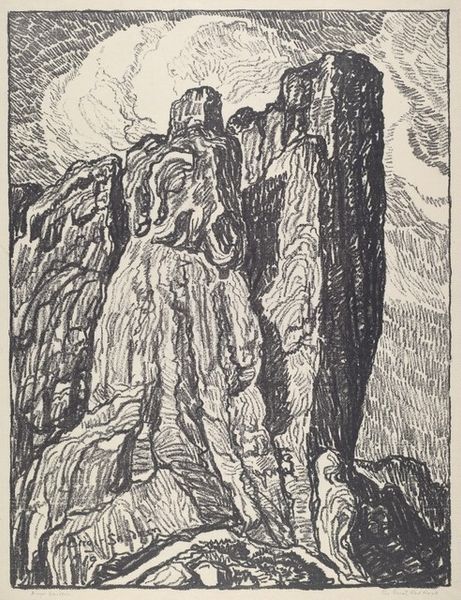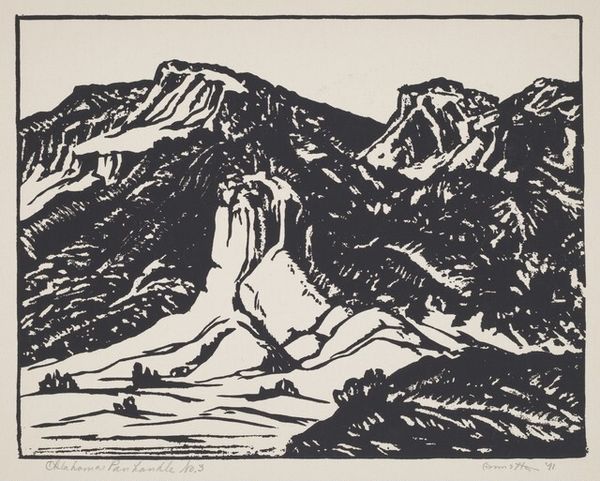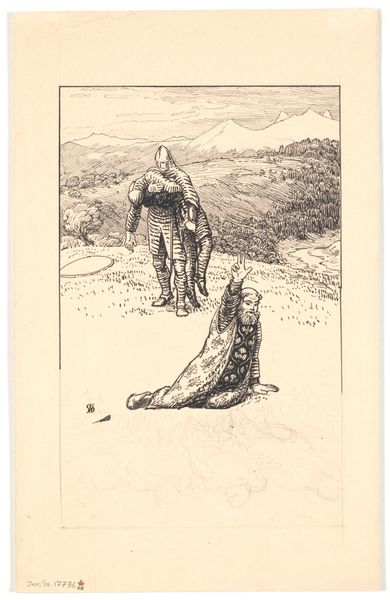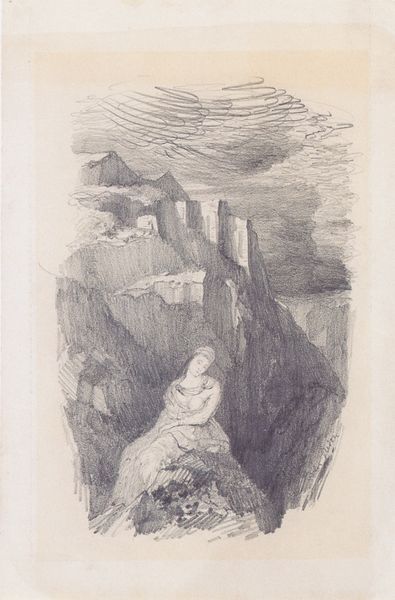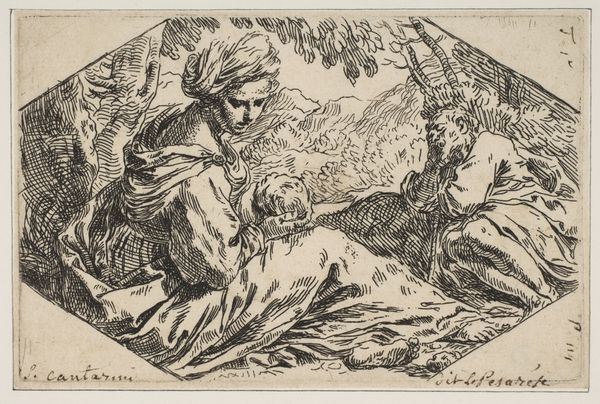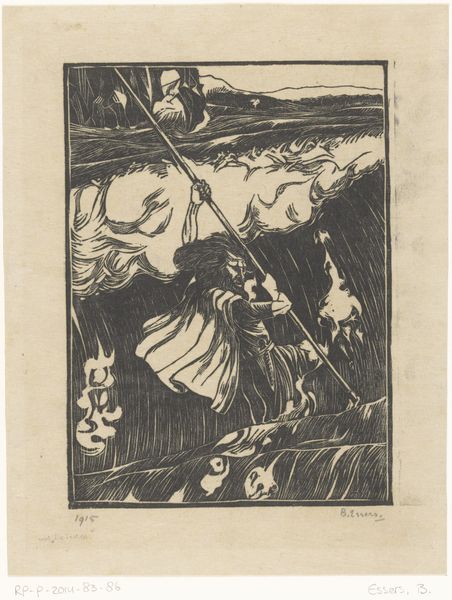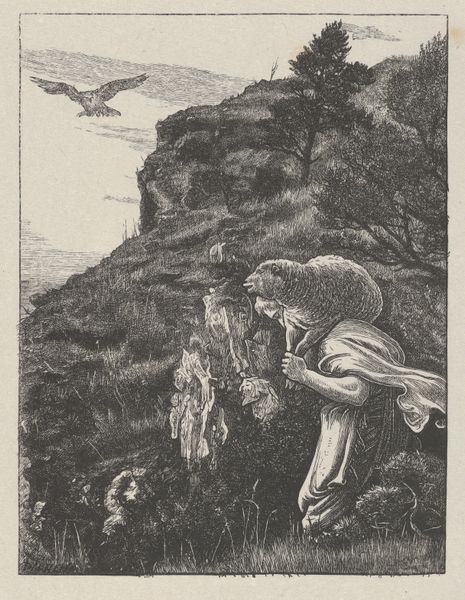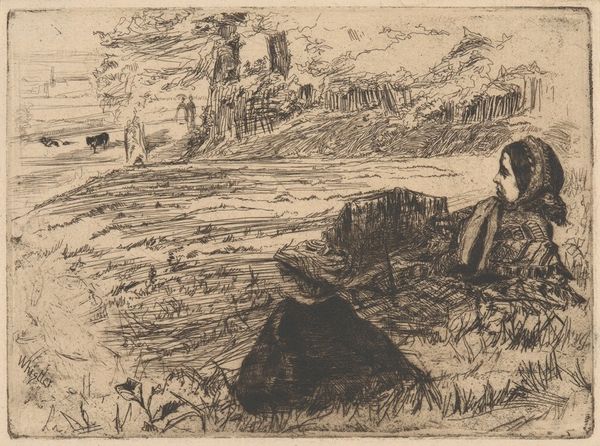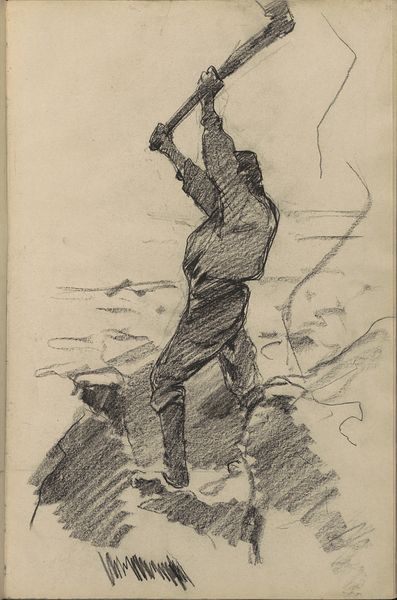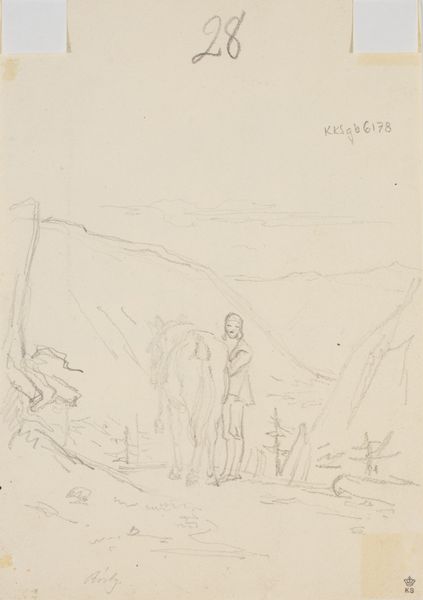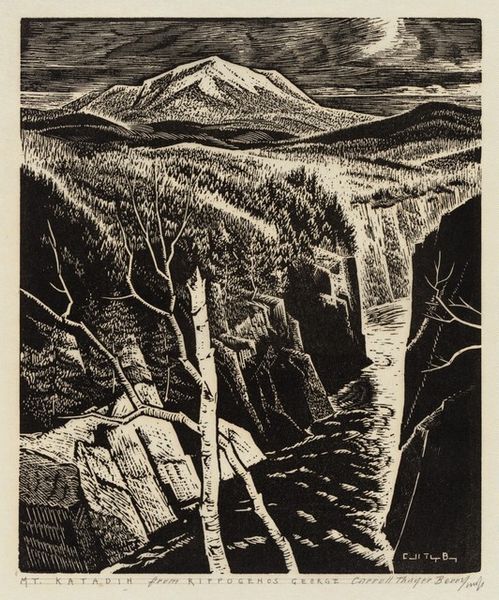
drawing, print, paper, ink, graphite
#
portrait
#
drawing
#
narrative-art
# print
#
pen sketch
#
pencil sketch
#
landscape
#
figuration
#
paper
#
ink
#
symbolism
#
graphite
Dimensions: sheet: 25.1 x 31.9 cm (9 7/8 x 12 9/16 in.)
Copyright: National Gallery of Art: CC0 1.0
Editor: This drawing by Edvard Munch, *Peer Gynt*, was created in 1896, seemingly using graphite and ink on paper. It’s… well, it’s stark. Two female figures dominate the foreground, one looking away, the other looking defeated, set against a landscape and the appearance of superimposed text, like a poster. What stands out to you about its imagery? Curator: The layering is key. We have figures that seem to represent different stages, different perspectives. The younger woman gazes outwards, maybe towards hope, represented by the landscape. But her vision is somewhat obstructed or perhaps influenced, we could say overshadowed, by the sorrow in the foreground, the face etched with the weight of time and perhaps disappointment. Think about archetypes of womanhood, innocence versus experience, hope versus despair… How do you see that reflected here? Editor: That’s a good point; the landscape feels distant and almost unreal, in contrast with the immediate, emotional faces. So, the imagery, by repeating and distorting recognizable visual motifs like the mountain, and the faces…they emphasize certain aspects of human experience? Curator: Precisely! Munch here captures the dichotomy, presenting figures almost as symbolic markers. Consider the gaze of the young woman – where is she looking? At opportunity, or at a mirage of what might be? The sorrowful figure serves almost as a warning. By utilizing visual repetition, such as the echo of lines between the mountain range and the furrows on the elder face, a cultural memory surfaces: choices resonate through time. Editor: I see. So it's not just about the surface image; it’s about how these symbols interact to convey deeper, universal themes of choice and consequence. Thanks, that gives me a lot to consider. Curator: Indeed, and how these resonate through our shared cultural landscape.
Comments
No comments
Be the first to comment and join the conversation on the ultimate creative platform.
